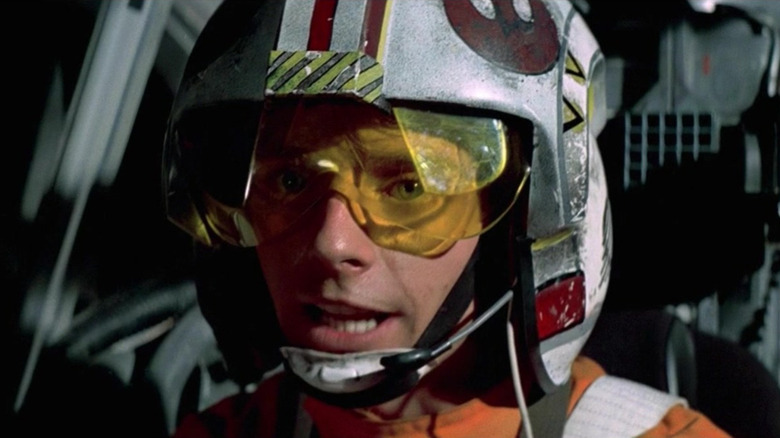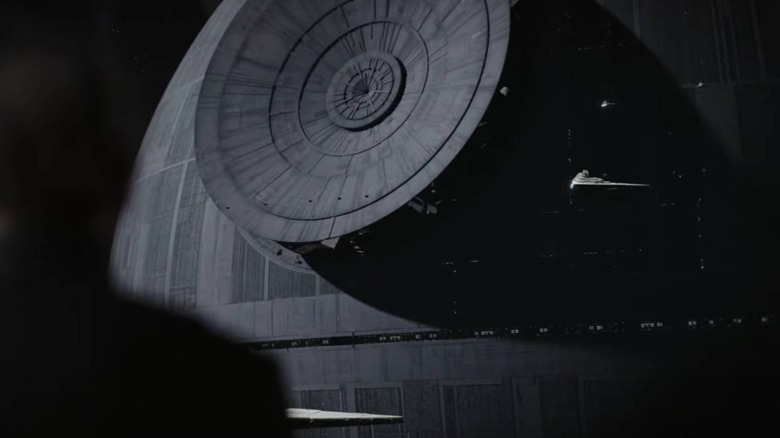Here's How Long It Really Took To Build The Death Star
Few fictional weapons of mass destruction loom as large in popular culture as the Death Star. Its menacing presence and unparalleled destructive power — capable of blowing up entire planets, as we are shown in the very first "Star Wars" film — illustrate just how oppressive and ruthless the Galactic Empire is, and thus why the Rebel Alliance is struggling so hard to throw off its yoke.
There is a reason, after all, that the whole plot of "Rogue One" essentially revolves around stealing plans for the Death Star, thus making possible the famed Battle of Yavin in which Luke Skywalker (Mark Hamill) manages to destroy it by launching a couple of torpedoes down a curiously unguarded exhaust vent.
But naturally, being a space station that is itself essentially the size of a moon and being a linchpin of an iconic science fiction franchise, the Death Star has also been at the center of endless debate and conjecture. In particular, how long would it have taken in franchise canon to build a space station of such mammoth proportions?
The Death Star took around 20 years to build
The widely accepted explanation is that what was to become the Galactic Empire would take about two decades to build something as massive and intricate as the Death Star. No small undertaking.
As a 2016 article at Inverse explains, this is supported by the events of the prequels of the late 1990s and early aughts. In short, Count Dooku (Christopher Lee) is shown to be in possession of the holographic schematics for the Death Star in "Attack of the Clones," and by the end of "Revenge of the Sith" a few years later, the ship's frame is shown to be in construction. 19 years later, in "Rogue One," Jyn Erso (Felicity Jones) and her band of rebels steal the plans for the completed Death Star.
The article also rehashes a bit of the back-and-forth between fans regarding whether the math holds up. Ultimately, it seems that it does. This is particularly prescient considering the mind-blowing post-credits scene at the end of the Season 1 finale of "Andor." This is when we are shown that the pieces Cassian (Diego Luna) and his fellow prisoners were building during his short time on Narkina 5 are intended for a nearly completed but still far from operational Death Star. Once again, given that "Andor" is confirmed to take place five years prior to "Rogue One," the math works.

